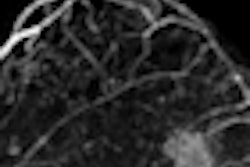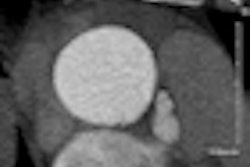VIENNA - A 54-month prospective study in France has found that 40% of immediate hypersensitive reactions to the administration of iodine- and gadolinium-based contrast agents are true allergies.
Updated results of the International Research and Working Committee on Imaging Contrast Media (CIRTACI) study, presented Monday at the European Congress of Radiology (ECR), also indicate that a true allergic hypersensitivity reaction would prevent a patient from taking that contrast agent for life.
The study was conducted from January 2005 through March 2009 in 31 centers in the country to differentiate between allergic and nonallergic hypersensitivity reactions to five gadolinium and 10 iodinated contrast agents.
Researchers, led by Olivier Clément, PhD, from European Hospital Georges Pompidou in Paris, included patients with very mild reactions, such as nausea (grade 1) and mild cardiovascular symptoms (grade 2), to more severe reactions, such as anaphylactic shock (grade 3) and cardiac arrest (grade 4).
Patient population
A total of 319 cases were available for review. The initial sample included 179 grade 1 reactions, 91 grade 2 reactions, 39 grade 3 reactions, and five grade 4 reactions. There were five undetermined reactions.
The researchers narrowed the analysis to 275 patients who followed the entire protocol, and for whom complete medical information was available. Iodine-based contrast agents were given to 85% of the patients, while 15% received gadolinium-based agents.
The mean patient age was 49 years, and the patients ranged from 33 to 65 years old. There were slightly more males (51%) than females in the study.
Among the 275 patients, 233 adverse reactions (85%) were attributed to iodinated contrast agents, and 42 (15%) were attributed to gadolinium agents. The researchers noted that all contrast agents in the study could be responsible for a reaction.
Reaction severity
"About 40% of the reactions were allergic, 51% were nonallergic, and 9% were other [types of reactions]," said Clément. "Among the remaining 24 patients, the reactions included pulmonary edema and allergies to latex."
Allergic hypersensitivity reactions were almost always found in grade 3 and grade 4 reactions. All five grade 4 reactions were ruled allergic, while 90% of grade 3 reactions were allergic. The percentages decreased to 35% allergic reactions in the grade 2 category and 28% among grade 1 cases.
In addition, the delay of onset of the reactions was eight to 10 minutes after injection. "The more severe the reactions, the [reaction] was faster to start," Clément added. "What we also can retain from this data is after 20 minutes we had no other allergy symptoms."
Skin testing
In other findings, skin testing was positive for allergic reactions in 80% of the iodine-based contrast cases and in 81% of the gadolinium-based cases.
Based on the results, Clément and colleagues concluded that 40% of the immediate hypersensitivity reactions to either iodine-based or gadolinium-based contrast agents are truly allergies. In 50% of the cases, the study showed cross allergies, making it important to explore the reactions with blood sampling and other testing.
However, Clément added that skin testing for every patient "is not recommended, because in the general population, there will be false positives. Here the skin testing was only made in patients who have presented with a reaction."




















